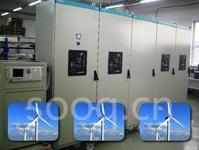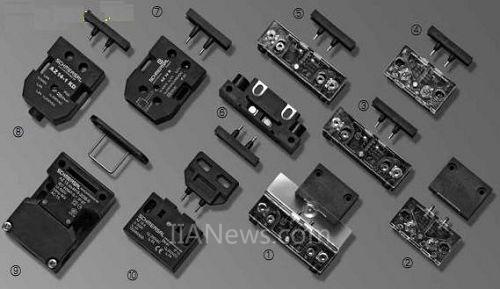Sophisticated technology that helps drivers avoid a crash is accelerating its descent from the rarified reaches of super luxury cars. What car makers, safety advocates and consumers still don't know is what difference that will make.
"Active safety technology" has been the buzz of auto-industry futurists for several years. The computing power installed on vehicles to manage airbags and anti-lock brake systems (as well as fuel and emissions controls) has formed a foundation for safety systems that don't just react to crashes – by exploding an airbag – but anticipate dangerous situations.
Active safety systems now on the market fall into five areas, as defined by a recent study by the Insurance Institute for Highway Safety, the vehicle safety research arm of the insurance industry.
These categories are: forward collision warning with automatic braking; emergency brake assistance; lane departure warning; blind spot detection; and adaptive headlights.
I've experienced several of these technologies in either production or prototype form. The top of the line Lexus LS 460 sedan offers an optional collision warning system that senses when you are closing too rapidly with an object ahead, and automatically tightens the seatbelts and will automatically apply the brakes if the driver doesn't. It happens so fast, at least on a test track, you hardly know it before it's over. This technology confronts drivers with the unpleasant truth that a properly engineered machine can react more rapidly in an emergency than most humans can.
My limited experience with lane departure warning systems is different. These systems you notice. One system I have tried keeps an electronic eye on the white lines. If you cross a lane marker without signaling, you get a warning sound – say a chime. After about a day with one of these, I turned it off.
Adaptive headlights swivel to see around corners. These are available on a lengthy list of luxury cars. Driving in the city, on well-lit streets, this technology doesn't add much. But on a dark country road, you just might see a deer standing just around a bend that you wouldn't have otherwise.
The Insurance Institute analyzed crash data from 2002 to 2006, looking to correlate the circumstances of crashes with the potential for one of the five active safety technologies to make a difference.
Adrian Lund, the Insurance Institute's president, says there are three big questions about active safety technologies. One is the number of crashes in which the technology might play a part. The second is whether the information is delivered in an effective way so that drivers make the correct response. The third is "do drivers change their overall approach to the driving task, or do they turn off this stuff because it's too annoying?"
As for relevance, top on the list is forward collision warning with automatic braking. The IIHS estimates more than 2.2 million crashes, with 7,166 fatalities occurred annually, on average, during the 2002-2006 period that might have been prevented or made less severe if cars had systems that anticipated a head on collision, and braked the car. That's about 40% of total crashes reported to police on average per year during that time.
That doesn't mean all those crashes would be prevented by automatic braking systems, the IIHS says. But some of them might have been and the pool of accidents where forward collision warning systems would come into play is the largest by far of the five areas studied.
Lane departure warning technology has a different profile. only about 483,000 crashes a year are linked to drifting out of the lane. But those accidents resulted in more than 10,000 fatalities. While lane departure warning systems in vehicles are relatively new and haven't been research, the effectiveness of rumble strips installed along roadsides has been studied. Institute researchers estimate they cut by 25% to 30% the number of accidents in which a drowsy or distracted driver runs off the road. That suggests onboard lane departure warning systems could have a significant impact -- if drivers use them.
Mr. Lund says predicting the real-world impact of technology isn't easy. The insurance industry anticipated that anti-lock brake systems would result in a big decrease in accidents – because fewer cars would skid out of control during hard braking. But real world statistics didn't bear out that prediction – or insurance rate discounts based on it .
Safety researchers also are wary of technologies that make drivers feel "too protected," Mr. Lund says. Those see-around-the-corner headlights could fall into that category, encouraging people to drive faster on darkened roads.
While the Institute and insurers wait for real-world data to draw conclusions, car makers are pushing ahead.
Volvo, the Swedish luxury brand owned by Ford Motor Co., plans to expand its existing active technology offerings with a system called "City Safety," which will offer accident avoidance at low speeds. For example, a Volvo that is turning left at under 9 miles per hour might stop itself if the vehicle in front suddenly stops.
参考译文:
帮助司机避免撞车的尖端技术,正加快其在豪华轿车领域的应用。但汽车制造商,安全倡导者和消费者仍然不知道这些技术所能达到的效果。
"主动安全技术"近年来一直是汽车产业未来学家的话题。除了燃油和排放控制以外,通在车辆上配备计算能力来管理安全气囊和防抱死系统已经成为安全系统的基础——这样的安全系统不再单纯地对碰撞做出反应(爆炸安全气囊),还能预见危险情况。
根据IIHS(保险业安全协会)的研究,主动安全系统目前在市场上划分为5种类型。
这5种类型是:正面碰撞警告及自动刹车,突发情况刹车辅助,车道偏离警告,盲点侦测和主动转向前大灯。
我已经在量产或原型车上体验过个别几种技术。雷克萨斯LS460的顶级配置提供可选的碰撞警告装置,当系统探测到你快速接近前方物体时收紧安全带并自动刹车。至少在测试道路上,这个过程发生的很快,以致你在它结束前根本无法意识到。这项技术让驾驶员认识到一个并另人不快的事实,在突发情况下合理设计的机器比人反应更快。
我对车道偏离警告系统的感受很一般。我尝试过的一个系统通过电子眼监视道路上的白线。如果你变道时没有打转向灯,你会得到一个警告声——说你违规。大约尝试了一天后,我关闭了系统。
自动转向前大灯可以自动转动来照亮车的周围角落。相当多的豪华车具备这项配置。在城市照明良好的道路上,这项技术发挥不了大的功用。但是在漆黑的郊外道路上,你可能依靠它发现一只站在弯道上的鹿,这在通常情形下是无法察觉的。
保险业安全协会试图通过分析2002至2006年的车辆碰撞事故的数据来发现任何一项主动安全技术能和事故发生的相关性,以证明5项主动安全技术的积极作用。
Adrian Lund, 保险业安全协会的主席认为主动安全技术有三个大问题。一个是多少事故中该技术能发挥作用。第二个是是否信息有效地传达促使驾驶员做出正确的反应。第三是“是否驾驶员因此改变了驾驶习惯,还是因为警告恼人而关闭了系统”。
至于和的事故相关性,最高的是正面碰撞警告及自动刹车。保险业安全协会IIHS估计,2002至2006年期间,平均每年超过220万事故,其中7166件死亡事故可以依靠安装系统的车辆预见正碰并刹车来避免或减轻严重程度。这个数字大约占该时期年均向警方汇报的所有事故的40% 。
保险业安全协会IIHS认为,这并不意味所有的事故可以依靠自动刹车系统来避免。但是它们中的一些或许可以并且正碰警告系统能够发挥作用的事故总数是研究至今五项技术中最大的。
车道偏离警告技术所面对的情况很不一样。每年只有大约483,000件事故因偏离车道引起。但是这些导致超过10,000件死亡事故。虽然车辆的车道偏离警告系统还是相对较新的事物并且没有深入研究,但是路肩隆声带的效果已经接受过调研。研究人员估算隆声带大约减少了25%至30%由驾驶员瞌睡、走神引起偏离车道导致的事故。这说明车辆上的车道偏离警告系统可以发挥重用作用——如果驾驶员愿意使用它。
Lund先生认为很难预测该技术对现实世界的影响。保险行业预期放抱死系统会急剧减少事故——因为在急刹车情况下很少有车会失控。但是现实的统计数字无法证实这个预见或在此基础上的保险费率的折扣。
Lund先生说,安全研究人员对能让驾驶员感觉受到良好保护的技术保持警觉。像自动转向前大灯就在此范围,他会变相鼓励人们在漆黑的道路上开得更快。
当研究机构和保险公司还在等待现实世界的数据来获得答案,汽车制造商已经走在了前面。
沃尔沃,福特在瑞典的豪华车品牌,计划拓展它现有的主动安全技术装备,提供一套名为“城市安全”的系统,能够在低速行驶中避免事故。例如,一辆以9英里/小时速度左转的沃尔沃在前车急停的情况下会自动刹车。



